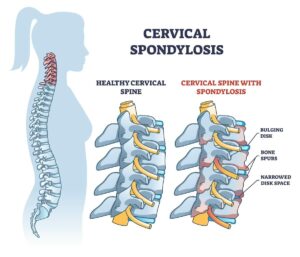Free download: Top 10 Natural & Easy Remedies for Joint Pain from Home. Learn these helpful remedies.
Estimated Reading Time: 6 minutes read
The Levator Scapulae Muscle Pain Syndrome is a condition not many are familiar with, but it significantly affects a person’s daily activities and overall well-being. This muscle, which runs from the upper part of the shoulder blade to the top of the neck, plays an integral role in our daily motions. The levator scapulae muscle is at work whenever you turn your head, shrug your shoulders, or even reach up to grab something.
However, when this muscle becomes strained or overworked, it can lead to persistent pain and discomfort. Modern lifestyles, especially with the rise of technology and sedentary habits, contribute heavily to this condition. Consistently looking down at smartphones and tablets or being hunched over computer screens can put undue stress on this muscle, leading to Levator Scapulae Muscle Pain Syndrome.
What’s concerning is that many people may not realize the cause of their discomfort, often mistaking it for general neck pain or tension. It’s vital to recognize the symptoms and understand the root of the problem to address and manage it effectively.
Table of Contents
Contributing Factors
- Poor Posture: Spending long periods with the head forward or the shoulders rounded, a common posture during computer work or smartphone usage, can strain the levator scapulae muscle, causing pain and discomfort.
- Muscle Imbalance: Weakness or tightness in the surrounding muscles, such as the upper trapezius and rhomboids, can lead to overcompensation by the levator scapulae muscle, resulting in pain and stiffness.
- Repetitive Movements: Engaging in repetitive activities, such as overhead reaching or heavy lifting, can lead to overuse and subsequent pain in the levator scapulae muscle.
Symptoms Associated with Levator Scapulae Muscle Pain Syndrome
The typical symptoms associated with Levator Scapulae Muscle Pain Syndrome include:
- Pain in the neck or shoulder area, sometimes radiating down the arm.
- A feeling of tightness or stiffness in the neck or shoulder region.
- Difficulty in moving the neck, particularly when tilting the head to the side or rotating it.
Targeted Techniques for Relief
Managing Levator Scapulae Muscle Pain Syndrome involves a combination of targeted stretches and therapeutic techniques. Engaging in these exercises can not only bring immediate relief but can also contribute to long-term muscle health, ensuring reduced chances of recurrence.
1. Trigger Point Therapy

- Utilize a lacrosse ball for this method.
- Place the ball against a wall.
- Lean into it, aiming at the painful and tense points in the upper back.
- Gently move to massage and release the muscle tightness.
2. Levator Scapulae Stretch
- Begin by sitting upright in a chair.
- Depending on the side of pain, place that hand on the seat. For instance, if your right side aches, use the right hand.
- With your opposite hand, gently grasp the side of your head.
- Apply a gentle pressure to guide your gaze toward the opposite armpit.
- Hold for 30 seconds and repeat three times.

Engaging in these techniques can be a proactive approach to addressing muscle pain. Regularly incorporating them into your routine can help in maintaining muscle flexibility and strength, essential for overall shoulder and neck health.
Remember, it’s always beneficial to be consistent in your efforts and to pay attention to how your body responds. Adjust the techniques as necessary to best suit your comfort level.
Strengthening Exercises for Long-Term Benefits
While stretches and trigger point therapies provide immediate relief, the importance of strengthening exercises cannot be understated.
Strengthening the muscles surrounding the levator scapulae provides support, reducing the strain and preventing future pain.
1. Shoulder Extension with Resistance Band
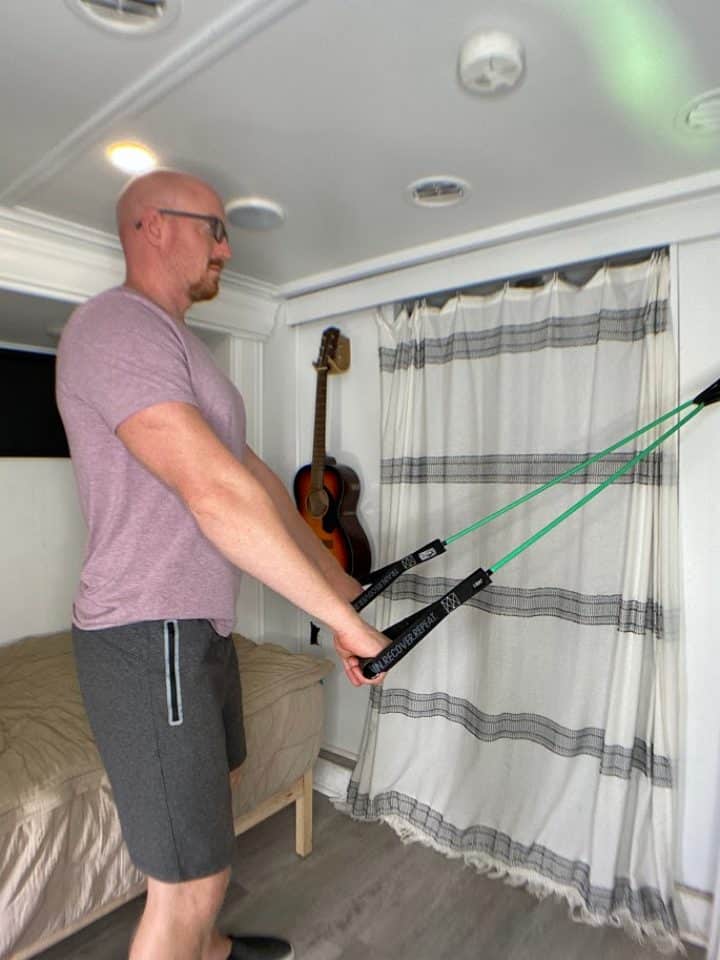
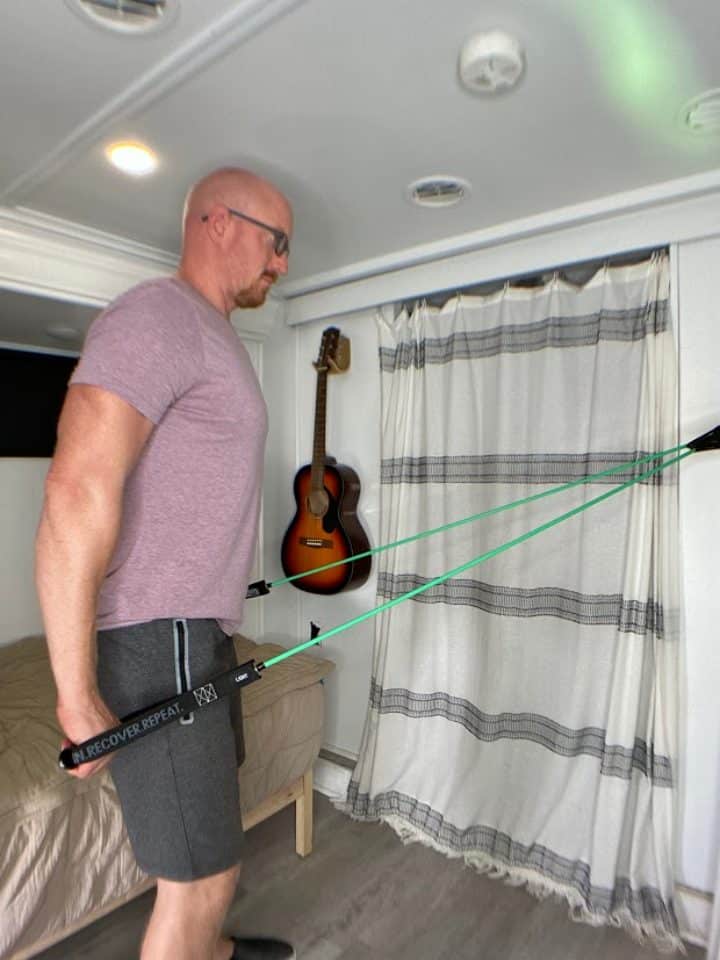
- Hold on to the ends of a resistance band (light, medium or heavy), which you can attach to a door knob.
- Begin with the arms elevated in front of you to shoulder height and the palms facing down towards the floor.
- Squeezing the shoulder blades down and back, pull back on the resistance band, and swing the arms back until they are next to you.
- Hold for 2 seconds, then lower back to your starting position.
- Repeat 10-15 repetitions for 2-3 sets.
2. Upright Row
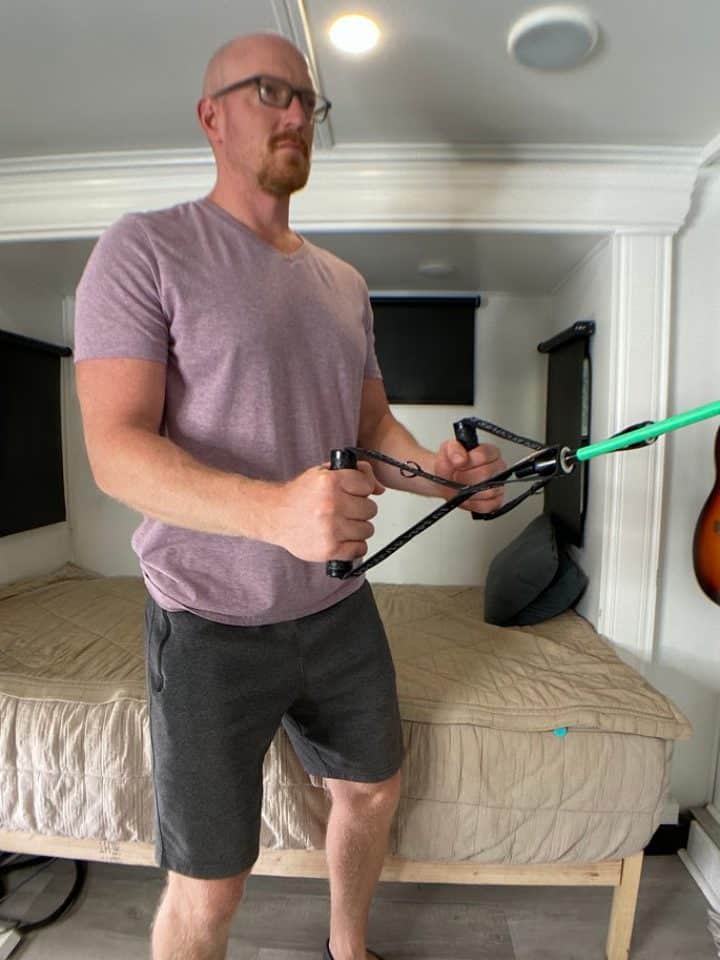
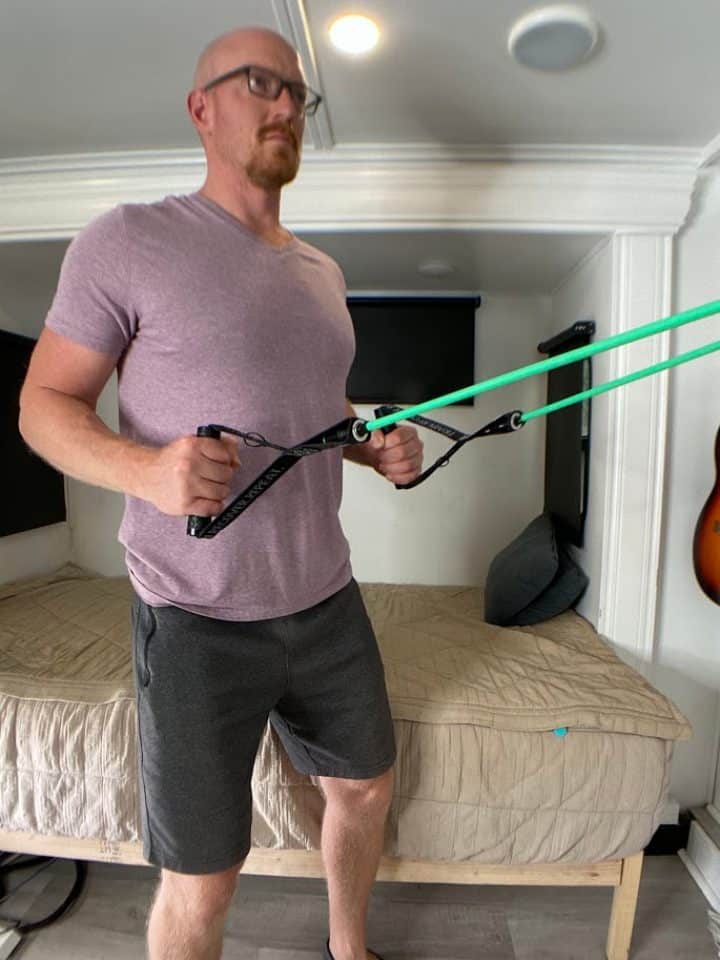
- Hold on to the ends of a resistance band (light, medium or heavy), which you can attach to a door knob.
- Begin with the arms elevated in front of you to shoulder height and the palms facing each other.
- Step back far enough that the resistance bend has a little tension.
- Pull back on the band by bending the elbows and swinging the arms back next to you. Make sure to squeeze the shoulder blades together.
- Hold for 2 seconds, then return to your starting position.
- Repeat 10 repetitions for 3 sets.
3. External Shoulder Rotation with a Resistance Band

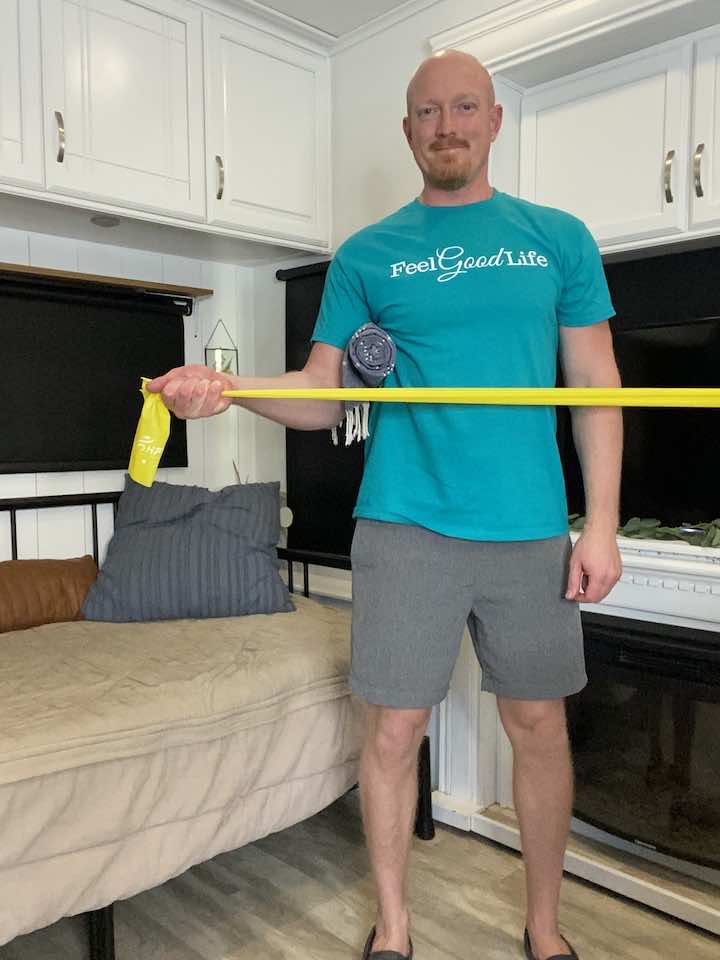
- Attach one end of the resistance band to a secure location, such as a doorknob or post, at the height of your elbow to perform the correct motion.
- Stand facing the band and hold the other end with your hand on the same side, elbow bent at a 90-degree angle and tucked by your side, and palm facing towards your body.
- Keeping an upright posture, slowly pull the band away from your body, rotating your arm outward and away from your torso while maintaining the 90-degree angle of your elbow.
- Hold this position for 2 seconds, then return to your starting position.
- Repeat the movement for 10 repetitions, then switch to the other arm.
- Aim for 3 sets of this exercise.
4. Internal Shoulder Rotation with a Resistance Band
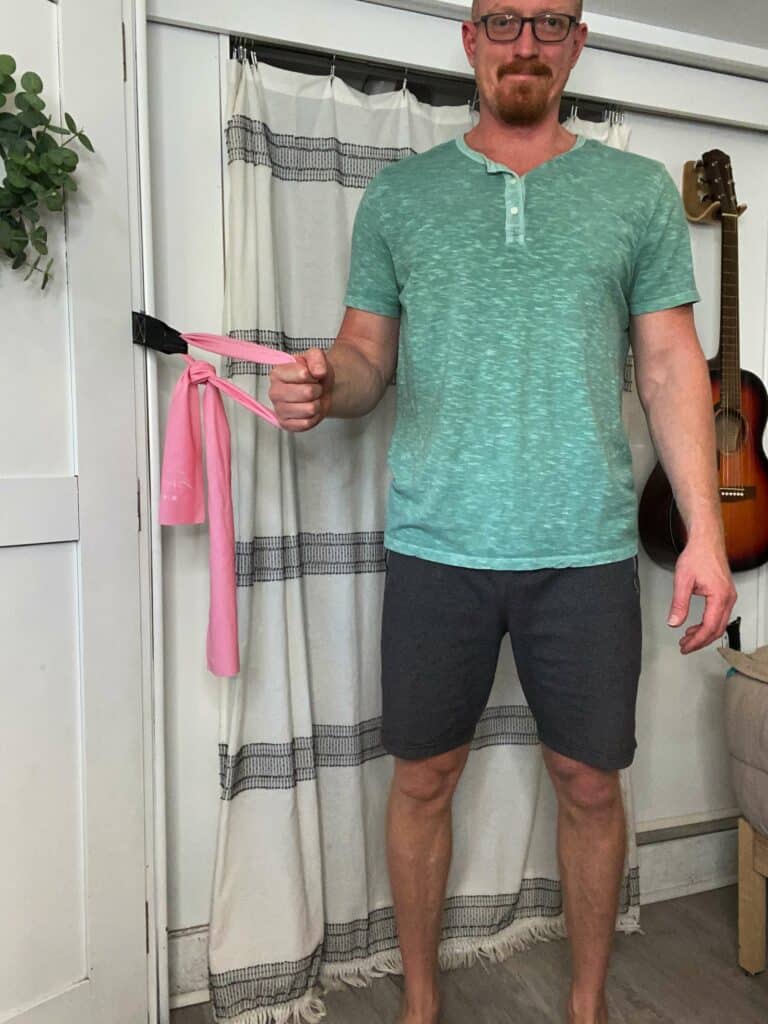
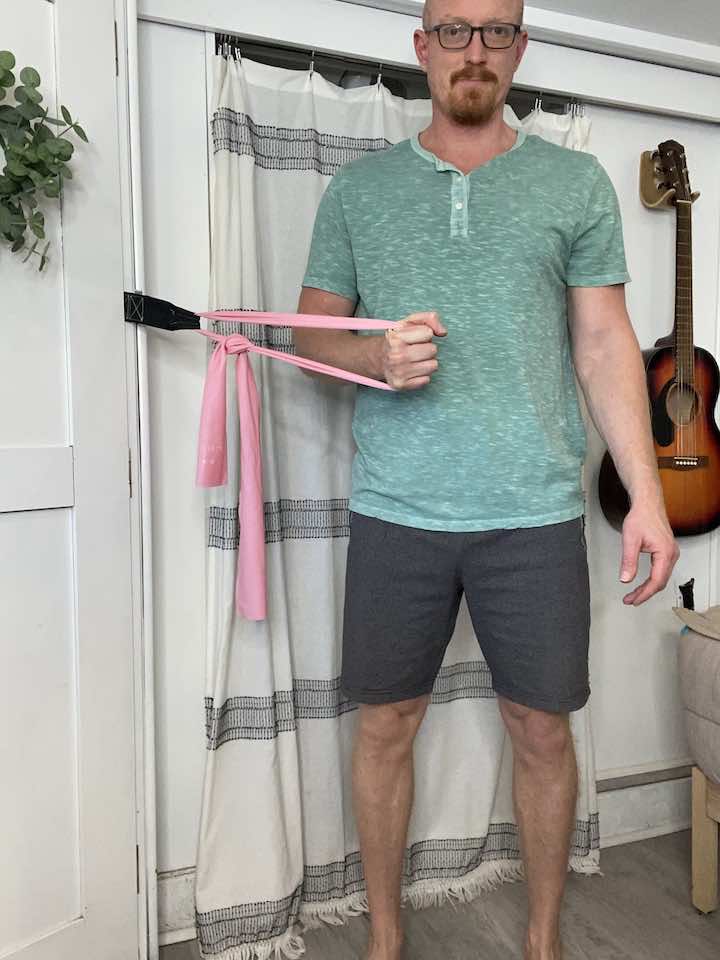
- To perform this exercise, you will need to attach one end of the band to a secure location, such as a doorknob or post, at the height of your elbow to perform the correct motion.
- Keeping an upright posture, slowly pull the band towards your stomach while maintaining the 90-degree angle of your elbow.
- Hold for 2 seconds, then return to your starting position.
- Repeat the movement for 10 repetitions, then switch to the other arm.
- Aim for 3 sets of this exercise.
Prevention and Care
Understanding how to prevent Levator Scapulae Muscle Pain Syndrome is as crucial as knowing how to treat it. Posture plays a pivotal role. In today’s digital age, many of us spend hours hunched over computers or looking down at our devices. This posture strains the neck and shoulder muscles. Adopting an ergonomic workspace and consciously trying to sit and stand straight can work wonders.
Another critical aspect is even weight distribution. When you carry heavy bags or backpacks, especially only on one shoulder, it can cause a muscle imbalance. Switching sides regularly or opting for backpacks that distribute weight on both shoulders can be beneficial in avoiding undue strain on the levator scapulae.
Lastly, incorporating regular stretches and exercises into your routine ensures the muscle remains flexible and strong. Not only does this act as a preventive measure, but it also aids in faster recovery if there’s any muscle strain.
Conclusion
Managing Levator Scapulae Muscle Pain Syndrome is all about blending the right treatments with daily habits. Simple changes, like regular stretches and posture adjustments, can significantly improve comfort and prevent future issues.
Remember, prioritizing your well-being makes a world of difference. If pain continues or worsens, always seek advice from a healthcare professional. They’ll guide you towards the best steps for your neck and shoulder health.n.









